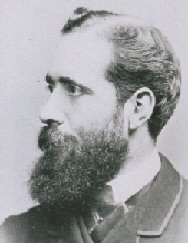Stopes Palaeolithic Archive
Francis Wenban-Smith, 2007. https://doi.org/10.5284/1000268. How to cite using this DOI
Data copyright © Dr Francis Wenban-Smith unless otherwise stated
This work is licensed under the ADS Terms of Use and Access.
Primary contact
Dr
Francis
Wenban-Smith
Department of Archaeology
University of Southampton
Avenue Campus
Highfield
Southampton
SO17 1BJ
England
Tel: 02380 596864
Resource identifiers
- ADS Collection: 683
- ALSF Project Number: 3338
- DOI:https://doi.org/10.5284/1000268
- How to cite using this DOI
Introduction

The Stopes Palaeolithic Archive project was backed by the Aggregates Levy Sustainability Fund as distributed by English Heritage, and undertaken by Francis Wenban-Smith of the University of Southampton.
The project is focused on the study of a very substantial collection of Lower and Middle Palaeolithic artefacts made by Henry Stopes, a private collector, in the late 19th century. Most of the artefacts in the collection came from Pleistocene deposits exposed by quarrying in the Swanscombe area of Kent. This is both a key region for Palaeolithic archaeological evidence and one currently under severe development presssure. The Stopes collection is of remarkable size, occupying almost 200 crates, weighting several tons and filling a substantial basement room. It was acquired by the National Museum of Wales in 1912, and has remained in storage since then. No one has yet succeeded in counting it, although it has been estimated to contain 50,000 to 70,000 artefacts. The collection is of particular significance because it is supported by a catalogue giving details of where each artefact was found.
The main objectives of the Stopes Palaeolithic Archive were:
- To identify the locations in the landscape of Stopes' find-spots, in particular locations not previously mapped by other projects and where Pleistocene sediments were still present
- To identify the stratigraphic context of the artefacts in the Stopes collection, and to relate this to mapped Pleistocene Sedimentary units
- to assess the potential of the artefacts in the Stopes collection to contribute to national and regional Palaeolithic research objectives
- To determine appropriate evaluation and/or mitigation strategies for surviving deposits at Stopes' sites in advance of any potential impact for development.







